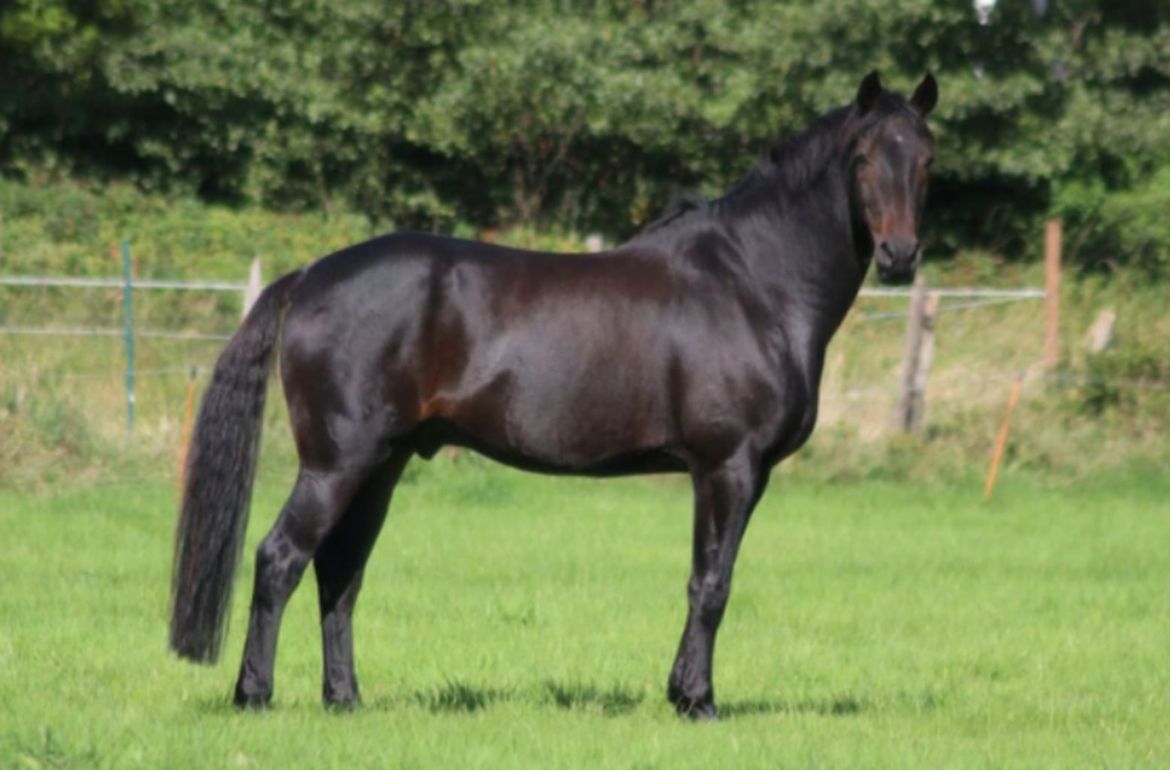Summer is Here - Tips for Hot Days
By Amelie Kokorsky
It's finally here - summer. Most people are very happy about the first warm summer days. Our animals, too, often seem more agile and eager to move. The familiar "spring fever" sets in. But when the temperatures continue to rise, the feeling of joy also changes quickly. You already sweat in the shade and you don't even want to think about exercise. Horses also have to cope with high temperatures. In Germany, we often reach temperatures of over 30° in summer and this can become a problem, especially for young horses and/or older horses. The animals do not manage to regulate their temperature balance and quickly overheat. For most horses, it is enough to cool down if they can stand under a shady tree or in a cool shelter. But for some horses it is simply too warm even under such circumstances. These horses, but also all other horses, can be cooled down by slowly hosing them down with a water hose. You should always start at the bottom of the hind legs, as the lower area of the hind legs is furthest from the horse's heart, and then slowly work your way upwards and forwards.
Tip: Start at the hooves of the hind legs and slowly work your way up the legs. Always watch your horse and pay attention to its circulation or possible symptoms of circulation problems such as signs of colic, a swaying gait or heavy sweating. If there is a brook or river nearby that the horses can and may safely go into, the four-legged friends are often happy to go for a relaxing walk and take a short bath at the brook on hot days.
Perfect Time for a Cool Down
If possible, you should cool down during the midday hours, when the sun has the most power and the animals heat up the most. Towards evening, you can cool the feet a little more and wipe the tail with a sponge. In the evening hours, most horses automatically become more active again, because the sun goes down and the temperatures drop a little.
Shearing is the Best Solution for Coat Change Problems
The issue of moulting also plays a decisive role on hot days. Primarily for the older animals, because the change of coat is often more difficult for them and they sometimes do not manage to get rid of all their winter coat until the first warm days. The thick coat is an additional burden for the old horses and can aggravate the already stressful heat situation. To give old horses relief, you can use clippers and give them a sporty summer shave. This means that you can shear the neck and parts of the belly, but leave the back and kidney area still covered with the remaining winter coat. Then, if another cold rainy day comes, the horses are still well protected against the cold and wet.
One of the most important points is the shaded area. Every pasture should have a shelter that provides shade for the horses on hot days. The design of the shelter is very important. Ideally, it should not be closed on all sides, because then the warm air remains in the shelter and it becomes even stuffier for the horses. A shelter with one closed and three open sides is usually the best solution. The horses can stand against the closed side and still get a refreshing draught of air. The shelter is well ventilated at all times.
Tip: Despite the lush meadow, many horses still resort to hay nets if you attach them to the shelter. You can make it even more comfortable for the horses in the shade this way and at the same time prevent long feeding breaks.
The perfect Shelter for Hot Days
The size of the shelter should always take into account the size of the herd. Quarrelling over shady spots should definitely be prevented. On hot days, stress can increase the risk of suffering from circulatory colic. Especially young and/or low ranking horses can be affected. Therefore, any shelter should offer enough space for all horses or have a good alternative option, such as shady trees. If you want to give your horses a real luxury, you can even attach simple fans to the shelter.
Caution: The fans should be placed in such a way that the horses cannot touch them. Attention should also be paid to the placement of the cables - the cables must be out of reach of all horses and no horse should be in danger of stepping on or chewing on a cable. Safety definitely comes before luxury! If you do have the possibility of attaching a fan, you should not go too high when choosing the intensity. The fan should only move the air in the shelter a little, but not directly cool the horses or cause a strong gust of wind.
It can also make sense to move the grazing time to the cool evening and night hours. Most of the time, the boxes are actually cooler. Of course, this should be checked beforehand. The horses can then cool down in the shade during the day and are then let back out to pasture in the evening. The animals learn to rest in the boxes during the day and to eat and move around in the pasture in the evening and overnight. In the first few days of the change to pasture, some horses may seem a little tired and exhausted because their usual sleeping rhythm is disturbed or changed. However, this usually settles down by itself after a few days and does not harm the horses.
Tip: A good time in the box or in another shady place is from 10 am to 5 pm.
Provide Sufficient Water and Several Drinking Points.
One of the most important points is of course the water supply. A horse already drinks around 60 litres of water per day in normal temperatures. Many owners, therefore, underestimate the increased water requirements of their horses on hot days. Some four-legged friends can drink twice their normal water requirement on, particularly warm days. Therefore, enough water should be available at all times. Here, too, care should be taken to ensure a sufficient amount for EACH horse. Often there is also rank fighting in a herd of horses due to too few water sources. Here, too, the younger, older and lower-ranking horses are very likely to get less water or get into stressful situations, which are not without danger in the heat. To avoid stress and fights, it is advisable to provide at least two or more water points for the horses, depending on the size of the herd.
Some horses quickly suffer from circulatory problems in the heat. Hawthorn has proven to support the heart and circulatory system and can help stabilise the horse's circulation on hot days. Especially older horses benefit from this plant on hot days. Already 40-60g daily can have a supporting effect on circulatory problems.
Your checklist for the next hot spell:
- Enough water (for the entire herd). At least 2 or more water points are recommended for a larger herd. A horse drinks about 60 litres per day at normal temperatures. Accordingly, at least (!) 60 litres of water must be freely available to each horse.
- An airy shelter
- Adapted pasture management
- Possibilities to cool down the horses with water (sponge, bucket, water hose,...)
- In the best case, a cooling bathing possibility (lake, stream,...)
- For older horses with a residual winter coat, shearing can be a remedy.
- Hay and hay nets for the shelter
- A supply of Stiefel Hawthorn for horses prone to circulation problems
- A thermometer to be able to measure temperatures in shelters and boxes
- Attachment of fans (only if safely possible).
Of course, the best way to be prepared is to have taken all precautions before the first onset of heat and, on the particularly warm days, simply relax with the horses in the shade with a cool footbath to enjoy the summer without having to worry that the heat might harm the animals. Even though most horses can naturally cope with high temperatures better than we humans can, taking some precautions is always a better feeling than having to constantly worry about possible overheating or other heat-related problems.
Despite all efforts, one should always keep an eye on the horses and call the vet if there are signs of circulatory colic or collapse.
Latest reviews
-
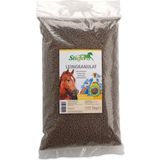 5.0 (7)
5.0 (7)Stiefel Linseed Granules, 5 kg
- Ready-to-feed linseed cake
- High mucilage content
- Reduced fat content due to cold pressing
£17.80 (£3.56 / kg)Delivery by January 07
-
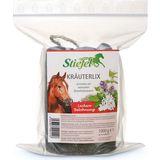 4.8 (10)
4.8 (10)Stiefel Kräuterlix Horse Lick, 1 kg
- Lick stone with bronchial herbs
- A tasty reward
- With attached cord to tie it up
£13.33 (£13.33 / kg)Delivery by January 07
-
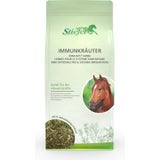 5.0 (7)
5.0 (7)Stiefel Immunity Herbs , 1 kg
New!- 100% natural herbal mixture
- Immunity herbs
- Good for the body's defences
£22.27 (£22.27 / kg)Delivery by January 07
-
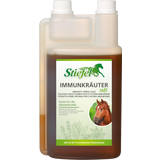 4.8 (6)
4.8 (6)Stiefel Immunity Herbal Liquid, 1 l
New!- To support the immune system
- Made of 100% natural herbs
- No added sugar
£15.12 (£15.12 / l)Delivery by January 07
-
Great Britain: Free standard delivery from £79.90
-
Free
returns Secure payments
with SSL encryption technology

